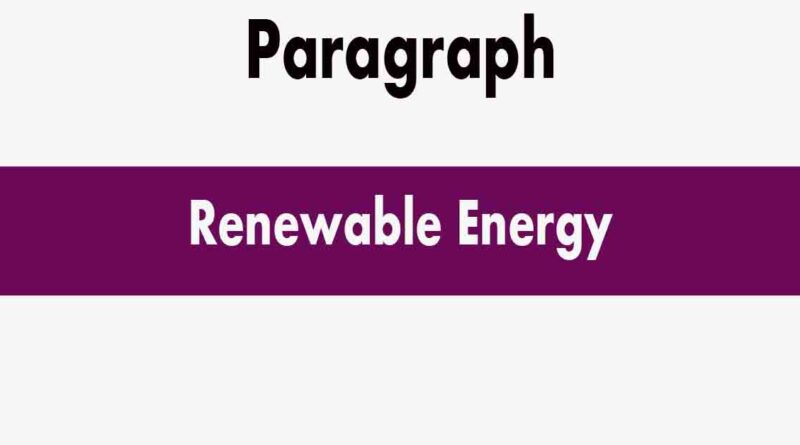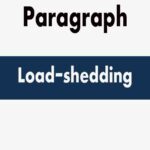Renewable energy paragraph
Renewable energy paragraph for SSC
Renewable energy means a form of energy, such as wind and solar power, that can be produced or replaced as quickly as it is used. The energy crisis is a serious problem in today’s world. Scientists predict that oil, diesel, coal and gas reserves will run out within the next fifty years.
Then the world will face a great crisis. It is true that modern civilization is fueled primarily by oil. Liquid fuel is behind all kinds of energy production. But oil is not found in every country.
Several countries are major oil exporters and most countries import heating oil. But very soon the exporting countries will lose their oil reserves: So it is time for us to consider an alternative source of energy.
Solar energy is becoming popular in Bangladesh. It can save oil and other kinds of energy. Biogas made from garbage and cow dung can significantly offset the lack of electricity.
Generating electricity is very expensive. Therefore, its alternative must be invented very soon. Bangladesh’s population is growing rapidly, and so is the demand for electricity.
Currently, the government is considering the use of atomic energy in the production of electricity. If it is implemented, we can overcome the power crisis. It also makes us forget about reducing the load. So it is high time to think about renewable energy.
Paragraph:- A computer paragraph for class 7, 8, ssc and hsc
Renewable energy paragraph for HSC
Renewable energy refers to energy sources that renew themselves naturally and have a minimal impact on the environment. Unlike fossil fuels, which are exhaustible and contribute to climate change, renewable energy comes from sources such as sunlight, wind, water (hydroelectric), biomass and geothermal heat.
These sources offer a sustainable and clean alternative to traditional forms of energy production. Solar energy is one of the most popular and affordable forms of renewable energy.
It involves capturing the sun’s rays using photovoltaic cells or solar thermal systems to produce electricity or heat. Solar panels installed on rooftops or solar farms can convert sunlight into usable energy, reducing dependence on non-renewable resources.
Wind energy uses the power of the wind through wind turbines to generate electricity. Large wind farms, often located in areas with strong and consistent winds, can produce significant amounts of clean energy.
Offshore wind farms located in offshore waters are becoming increasingly popular due to higher wind speeds and reduced visual impact.
Hydropower uses the power of moving water, such as rivers or waterfalls, to generate electricity. Dams or flow systems capture the kinetic energy of the water, which is then converted into electrical energy by turbines.
Hydropower can provide a reliable and continuous source of renewable energy, especially in regions with abundant water resources.




